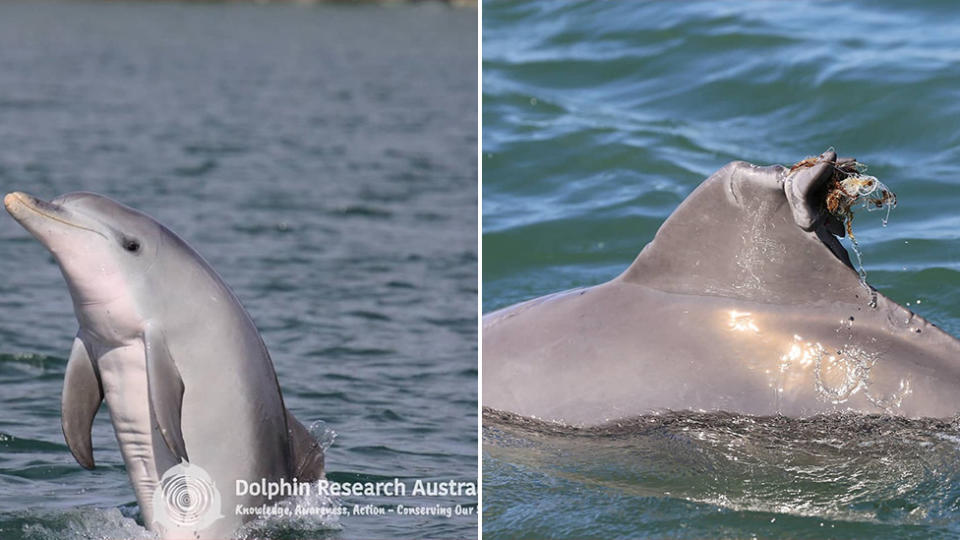Disturbing photo of dolphin serves as stern warning for Queensland tourists
An upsetting image of an injured dolphin should serve as a warning to tourists and fishermen in Queensland’s Moreton Bay, a research body has said.
During their last expedition in Queensland’s Moreton Bay, Dolphin Research Australia encountered a dolphin entangled in fishing line.
The group said in a Facebook post that the dolphin was spotted near Karragarra and Macleay Island and has previously been seen off Peel Island, all located in Moreton Bay.
The post calls for those in the area to look out for the dolphin and report sightings to the QLD RSPCA Hotline on 1300 ANIMAL (1300 264 625) to help the authorities keep track of the “young subadult”.
“Unfortunately, this is a common occurrence in Moreton Bay and we often see dolphins with injuries from such entanglements in fishing line,” Dolphin Research Australia said.
“It is up to all of us together to protect these animals and their habitats.”

Elizabeth Hawkins, Founding Director of Dolphin Research Australia said fishing and vessel strikes are among the biggest threats facing dolphins in the Morton Bay area, and illegal feeding of dolphins is common.
Moreton Bay is described as “a fishing enthusiast’s paradise, perfect for throwing a line in”.
According to Moreton Bay tourism’s site, it’s not just dolphins that frequent the bay, but also humpback whales, dugongs and turtles and the region encourages tourists to be aware of the guidelines in the area to avoid a fine.
The threat of fishing is being researched by Dolphin Research Australia and has also been observed by locals.
“I see this all the time on the Amity Jetty (located on North Stradbroke Island),” a Facebook user said on the initial post. “We reported a young dolphin with a line around its tail.”
“People are so careless with their fishing line,” another woman wrote.

Dolphin Research Australia have a list of guidelines to ensure people implement the best fishing practices, in line with Queensland’s, and the rest of Australia’s, regulations.
The offical government advice is to stay at least 50 metres away from dolphins when fishing and if dolphins do approach your boat, slowly move away.
“Boat users need to follow a few simple rules that will allow them to share the water with these animals, and each other,” a Queensland Department of Environment and Science spokesperson said.
It is illegal to feed dolphins in Australia without a permit, as is attempting to intentionally attract dolphins.
Dolphin Research Australia also suggests reeling fishing line in if there are dolphins around and ensuring the fishing line is secure, to ensure the line doesn’t end up in the ocean and around a dolphin.
Marine biologist and founder of Clear Tides, Jessica Brading says creating an initiative for fishermen to reuse and recycle their lines may prevent fishing line ending up around and injuring dolphins.
“We need some sort of program that rewards fishermen for discharging old lines appropriately, as well as educating those who do choose to fish on ways to safely dispose of tangled or unwanted line, without just letting it loose into the ocean,” Miss Brading said.
Do you have a story tip? Email: newsroomau@yahoonews.com.
You can also follow us on Facebook, download the Yahoo News app from iTunes or Google Play and stay up to date with the latest news with Yahoo’s daily newsletter. Sign up here.



